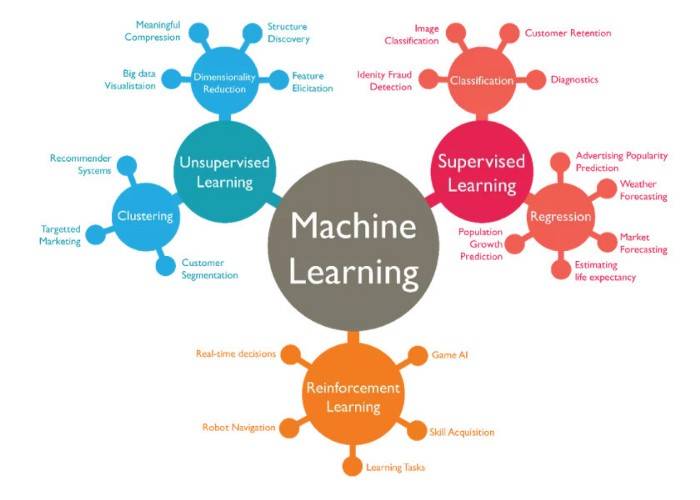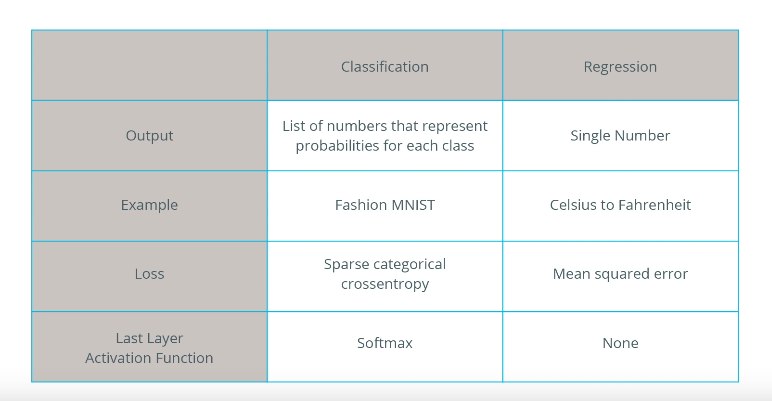Types of Machine Learning
- Supervised learning: The machine learns from labeled data. Normally, the data is labeled by humans.
- Unsupervised learning: The machine learns from un-labeled data. Meaning, there is no “right” answer given to the machine to learn, but the machine must hopefully find patterns from the data to come up with an answer.
- Reinforcement learning: The machine learns through a reward-based system.

Supervised Machine Learning
Supervised learning is the most common and studied type of learning because it is easier to train a machine to learn with labeled data than with un-labeled data. Depending on what you want to predict, supervised learning can used to solve two types of problems: regression or classification.
Regression
If you want to predict continuous values, such as trying to predict the cost of a house or the weather outside in degrees, you would use regression. This type of problem doesn’t have a specific value constraint because the value could be any number with no limits.
Classification
If you want to predict discrete values, such as classifying something into categories, you would use classification. A problem like, “Will he make this purchase” will have an answer that falls into two specific categories: yes or no. This is also called a, binary classification problem.

Unsupervised Machine Learning
Since there is no labeled data for machines to learn from, the goal for unsupervised machine learning is to detect patterns in the data and to group them. Unsupervised learning are machines trying to learn “on their own”, without help. Imagine someone throwing you piles of data and says “Here you go boy, find some patterns and group them out for me. Thanks and have fun.”
Depending on what you want to group together, unsupervised learning can group data together by: clustering or association.
Clustering Problem
Unsupervised learning tries to solve this problem by looking for similarities in the data. If there is a common cluster or group, the algorithm would then categorize them in a certain form. An example of this could be trying to group customers based on past buying behavior.
Association Problem
Unsupervised learning tries to solve this problem by trying to understand the rules and meaning behind different groups. Finding a relationship between customer purchases is a common example of an association problem. Stores may want to know what type of products were purchased together and could possibly use this information to organize the placement of these products for easier access. One store found out that there was a strong association between customers buying beer and diapers. They deduced from this statement that males who had went out to buy diapers for their babies also tend to buy beer as well.
Reinforcement Machine Learning
This type of machine learning requires the use of a reward/penalty system. The goal is to reward the machine when it learns correctly and to penalize the machine when it learns incorrectly.
Reinforcement Machine Learning is a subset of Artificial Intelligence. With the wide range of possible answers from the data, the process of this type of learning is an iterative step. It continuously learns.
Examples of Reinforcement Learning:
- Training a machine to learn how to play (Chess, Go)
- Training a machine how to learn and play Super Mario by itself
- Self-driving cars